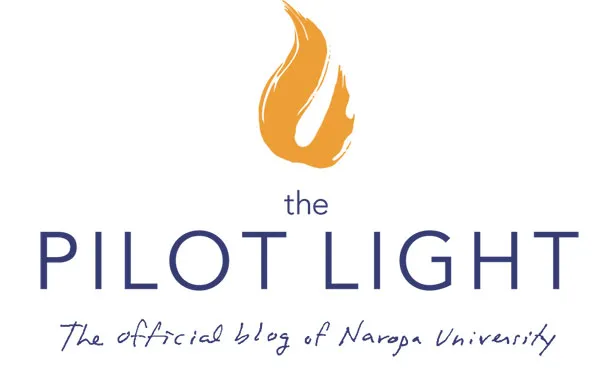![IMG_3967[1]](https://www.naropa.edu/wp-content/uploads/2022/10/img_39671.jpg)
As a brand new student at Naropa University, I had never even heard of a ‘Warrior’s Exam’ until this August. Then, I found myself out in the woods with 18 new friends and suddenly became involved in our very first challenge. Our instructors announced that the following evening, we would all be taking part in a Warrior’s Exam.
Upon hearing the words ‘Warrior’s Exam,’ I suddenly pictured myself arm wrestling in a full suit of armor, or riding a horse directly at my opponent, but that’s not exactly what happened. What did happen is that we received copies of the questions that we would be asked the following night. We were told that each one of us would be asked one question, but no one knew which one they would get. On the day of the exam, we would be asked to vocalize our understanding of the concepts we were studying on the spot, and integrate our study of the subject with our own insights and personal experience.
Then, the day arrived. We donned full costumes and came up with team names, but that is just because we are a Wilderness Therapy class, and well, we just do everything a little differently. What happened next was that our teams—the Lightning Ninja Tigers vs. The Goldenrod Warriors—lined up opposite each other and proceeded to cheer each other on as we asked and responded to one another’s questions. It was an experience of the type that I have never had before, and would love to have again. And despite the name, it was much more a collaborative learning experience than any kind of a competitive examination. More important than answering a question ‘correctly’ was to provide the presence and support to our classmates as they strived to deliver their best answer.
After my own positive experience with this exam, I was curious to know more, so I dug into it a little deeper. A 2014 Huffington post blog referred to these ‘Mindful Final Exams’ and traced the history of this Buddhist-inspired approach. It turns out that it is unique to Naropa and is one of the signature forms of oral exam we have been practicing for most of our more than forty-year history. It was adapted by our Buddhist founder Chögyam Trungpa Rinpoche from the tradition of debate in Tibetan Buddhist monasteries to draw out the spontaneous insight of his western students. Now, they are interchangeably called “Warrior’s Exams”, or the term that I prefer, based on the collaborative nature of the experience, “Warrior’s Exchanges”.
I have since had the opportunity to do another Warrior’s Exchange (though not in costume this time), and I increasingly love this way of processing knowledge. Never before in my academic experience have I had the opportunity to learn during and from a test, but this is exactly what I’ve noticed happening in my Warrior’s Exams. I have left both of the exams feeling strong, exhilarated, and if not quite ‘fresh from battle”, well, like a larger version of myself. The true test is to prepare to the best of your ability, to remain present under pressure, to provide support to others, and to spontaneously share those answers that arise in the moment. It sure doesn’t get you ready for a multiple choice test, but I’d argue that it prepares you for life, and what is an education if not preparation for real life?
“We contemplate meaning by holding the key points of the teaching in our awareness outside the context of actually reading, listening or taking notes. Essentially, we set aside study and ask “What does this mean?” directing our curious mind toward that which is deeper than definitions or comparisons. In the warrior’s exchange, we are able to offer insights and talk about what makes sense, or doesn’t, in a personal way. As a questioner, we have asked these questions ourselves and can see how to draw out the deeper contemplative meaning of the teachings when necessary.”
~William Hulley, M. Div.


